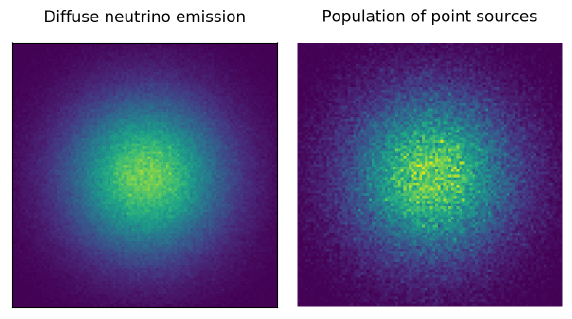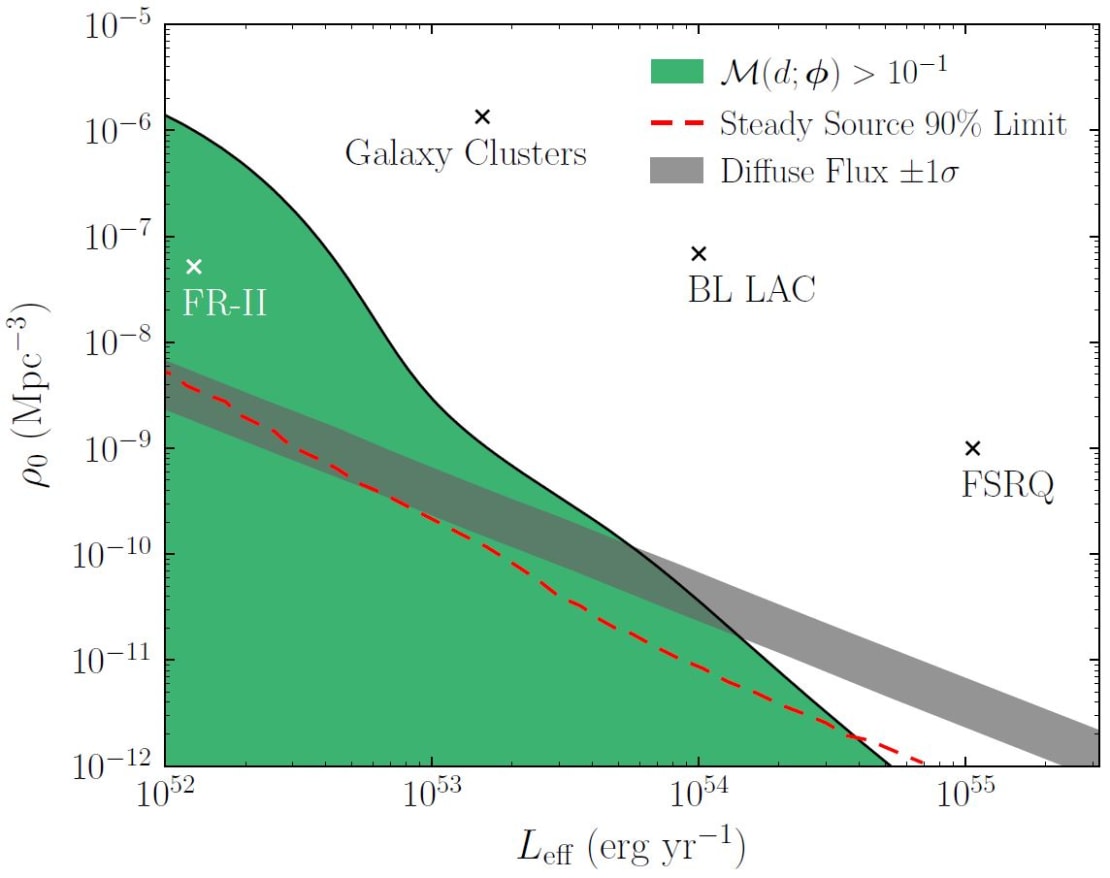Neutrinos are one of the best sources of information about extreme-energy astrophysical phenomena at the far reaches of the observable universe. These intergalactic messengers are able to travel through space unaffected by magnetic fields or other forces. This means that, in theory, if we can measure a neutrino’s incident direction accurately enough, we could trace it back to its source and identify what produced it.
When a number of neutrinos are associated with a single object in the sky, that object is called a “point source.” The IceCube Neutrino Observatory—an array of 5,160 optical modules embedded in a cubic kilometer of South Pole ice—has already performed a number of point source searches but has yet to identify any significant clustering of neutrinos that would be indicative of a single bright source. This might indicate that most of the neutrinos IceCube detects are not originating from a small number of bright sources, but instead a larger population of dim sources.
The IceCube Collaboration performed a search for these populations using a technique called the non-Poissonian template fit (NPTF) and published their findings in a paper being submitted to The Astrophysical Journal. This was the first time the NPTF was used on IceCube neutrino data, and while they did not find any neutrino point-source populations, they proved the technique’s viability.

The NPTF technique has a number of advantages over traditional point source search techniques, and it has been used widely with gamma-ray data. But this was the first time it was used for IceCube neutrino data.
“We wanted to see whether a totally different approach to searching for point sources, based purely on the modification to the statistics of the basic count map, could be a viable technique to apply to the IceCube dataset,” says Nicholas Rodd of the University of California, Berkeley, one of the leads on this analysis.
“When we take images of the sky, whether they are taken with cameras or neutrino telescopes, there is a certain amount of ‘graininess’ that is due to natural statistical fluctuations, which is called Poisson noise,” explains Institute for Data, Systems and Society postdoctoral associate Gabriel Collin, another lead author on this paper.
The math behind Poisson noise assumes that the neutrinos are produced by one large continuous physical process, resulting in a “diffuse emission.” However, if the neutrinos are instead being produced by compact astronomical objects—which is what Rodd and Collin expect—then the graininess is enhanced, leading to fluctuations larger than the Poisson model predicts. The presence of these non-Poissonian fluctuations can indicate how many point sources are producing the neutrinos and how bright or dim they are.
In this analysis, Rodd and Collin used the NPTF, which predicts the size of the fluctuations for a given theoretical model of the population of neutrino-producing astronomical objects. This formulation can detect the presence of a population of point sources even when the effect is slight, beyond what the human eye can discern.
They ran IceCube neutrino data through their formulation, but did not find evidence of a population of point sources. This null result rules out certain theoretical models of these populations, and the analysis ultimately demonstrated that the NPTF could successfully be applied to the IceCube dataset.

The NPTF can perform a number of searches that are difficult with other techniques, such as searching for populations of sources that are not distributed uniformly in all orientations on the sky. And although the NPTF is currently less sensitive than other techniques in some parts of the parameter space, there are many options to extend the method’s reach and significantly enhance its sensitivity.
“The goal of our analysis was to lay the groundwork for future work that leverages advanced statistical tools such as this non-Poissonian fluctuation model,” says Collin. “We hope that, through this effort, we can build a better bridge between the theoretical and experimental community in neutrino astronomy, and encourage future point-source population searches to publish their results in a similar fashion.”
Looking toward the future, Collin says he and Rodd hope to develop even more powerful statistical tools that can be used to search for point-source populations—not just in neutrino astronomy, but in gamma-ray, X-ray, and optical astronomy as well.
info “A Search for Neutrino Point-Source Populations in 7 Years of IceCube Data with Neutrino-count Statistics,” IceCube Collaboration: M. G. Aartsen et al., The Astrophysical Journal 893 (2020) 2, iopscience.iop.org, arxiv.org/abs/1909.08623